The Isabella Stewart Gardner Museum Theft: Part One
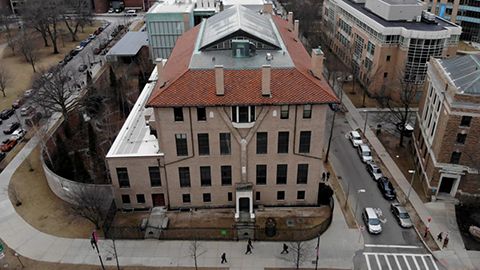
Andrew and I thought it was time you had another post in our Art Crimes series.
Today one of the most infamous and mysterious art heists ever and if you are interested there are still rewards on offer if you have any tips on who was involved!!
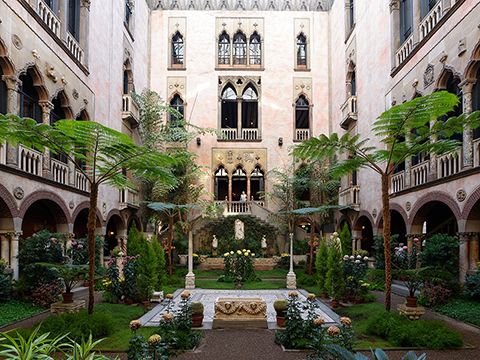
It's 12:30 am on March 18 in 1990 and St Patrick's Day has officially ended but the revelers haven't accepted that in downtown Boston, USA.
Passing by close to the Isabella Stewart Gardner Museum a couple of St Patrick Day merrymakers saw what looked like a couple of cops sitting in a car. Inside the museum two guards were on duty. Suddenly several fire alarms go off but as nothing unusual was detected and no smoke appeared the guards decided that a system failure must have been the cause.3
Just before 1.30am the two cops get out of their car and go to the side door of the museum, and were admitted by the museum guard believing they were there to investigate the disturbance.
At this point you will realise that the guards weren't particularly bright - maybe they too had been celebrating St Patrick's Day before going on duty!! Even though the guards hadn't phoned for police assistance they admitted these two men!
The not very smart guards were immediately arrested by the two cops who announced - just in case the guards hadn't fully grasped the situation:- Gentlemen, this is a robbery! 3
The guards were handcuffed and tied up in the basement of the museum being promised that if they kept "mum" about the robbery they would be rewarded in a year's tine.3
The two thieves first started to work in The Dutch Room cutting the paintings from their frames.
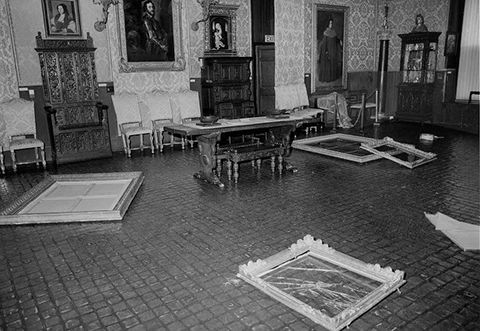
They first seized Rembrandt’s Christ in the Storm on the Sea of Galilee.
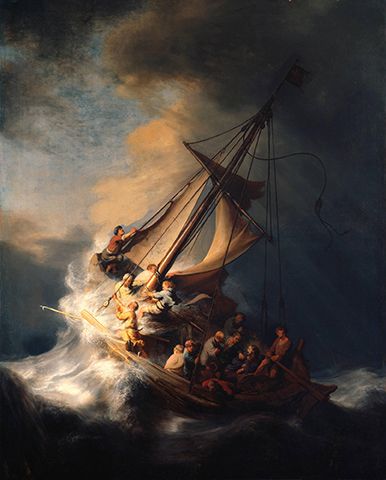
Christ in the Storm on the Sea of Galilee is a very significant painting because it was considered to be the best example of Rembrandt's narrative painting in America and is also his only painted seascape.4
Dated 1633, it was made shortly after Rembrandt moved to Amsterdam from his native Leiden, when he was establishing himself as the city’s leading painter of portraits and historical subjects. The detailed rendering of the scene, the figures’ varied expressions, the relatively polished brushwork, and the bright coloring are characteristic of Rembrandt’s early style. Eighteenth-century critics like Arnold Houbraken often preferred this early period to Rembrandt’s later, broader, and less descriptive manner.4
If you are interested you an read more about this painting by clicking here.
Next the thieves took A Lady and Gentleman in Black as shown below.

Johnanne Vermeer's The Concert was also taken from The Dutch Room. 1663-1666
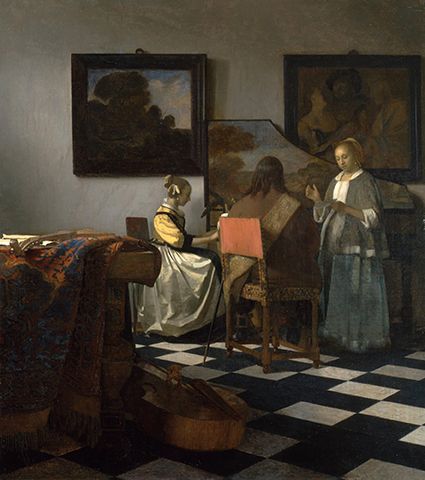
The Concert depicts a pristine domestic parlor, two women and a man concentrating on making music. The standing woman holds a sheet of music and raises her hand to beat time for her companions. Turned enigmatically away from our gaze, the seated gentleman wears an elaborate decorated sash that indicates his membership in a civic militia. Some scholars have been tempted to interpret Dutch musical scenes like this as moral warnings against seduction and illicit sex. Indeed, hanging on the wall at the right is a painting of a procuress by Dirck van Baburen. Although the subject of this painting-within-a-painting seems to suggest that something improper is taking place, the Procuress was in fact owned by Vermeer’s family. Moreover, the figures in the room are intently preoccupied with their music: they do not look at each other, and seem unaware they are being observed. Their intensity does not invite interruption. Lying on the large table at left is a lute, while a viola da gamba lies on the floor. Are these instruments soon to be taken up by the trio, or are others to join the group? Vermeer crafts rather deliberately a sense of mystery: this study in social interaction is a comedy of manners open to our interpretation.4
To read more about this painting click here.
Isabella Stewart Gardner established the museum in Boston in 1903. To read Isabella's story and how she went about establishing the museum please click here.
The Vermeer painting The Concert was Isabella's first major acquisition, and she bought it without the help of experts. It was bought at the Paris auction of the estate of Théophile Thoré (1807–1869), a prominent critic who wrote under the pseudonym William Bürger. He had been instrumental in reviving the reputation of Vermeer, which made this painting especially important.4
Finally, in The Dutch Room a painting by the not so well known Govaert Flinck titled Landscape with an Obelisk was taken from its frame. Flinck was a student of Rembrandt's and up until the 1980s the painting was attributed to Rembrandt. 4
You can read more about the painting here. Interestingly Isabella's opinion of Rembrandt was expressed with the words: “I really don’t adore Rembrandt. I only like him.” 4

Also taken from the Dutch Room was an ancient Chinese gu (beaker) and a a very tiny (4.5x5cm) self-portrait etching by Rembrandt from the side of a chest.4

And if you are wondering how all these details are known to the authorities - the thieves did take the video cassettes with the footage from the CCTV system, as well as the data printouts from the motion detection equipment but overlooking the fact that the movement data had also been recorded on a hard drive as shown below.3
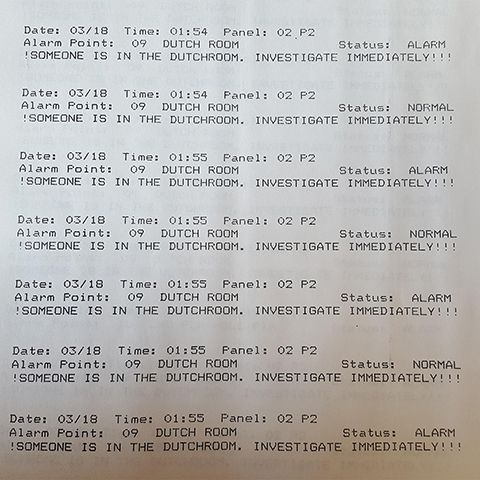
Within the museum one of the rooms has empty frames as a reminder of the theft and in vain hope that one day the paintings will be found and returned.
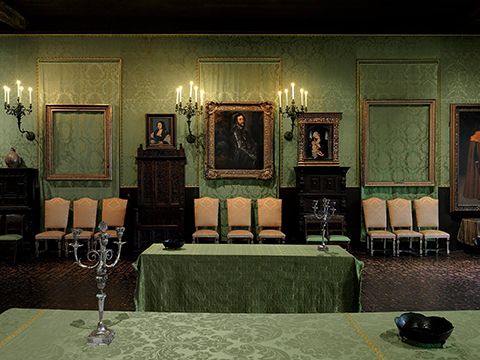
In a couple of days we will be back to tell you what the thieves took from the Short Gallery and the Blue Room. But tomorrow Jane has something special for you especially if you love Michelangelo.
Credits
1. bostonglobe.com
2. commons.wikimedia.org
3. mutualart.com
4. gardnermuseum.org

